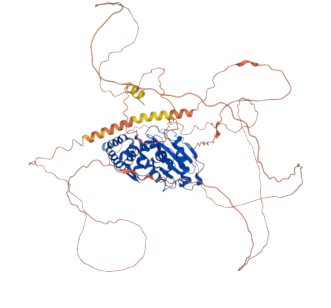New Computational Method Enhances Understanding of Warm Dense Matter

An international research team has made significant strides in understanding warm dense matter (WDM), a state of matter that exists under extreme conditions similar to those found in gas giants like Jupiter. This development, led by scientists from the Center for Advanced Systems Understanding (CASUS) at the Helmholtz-Zentrum Dresden-Rossendorf (HZDR) in Germany and Lawrence Livermore National Laboratory (LLNL) in the United States, utilizes a novel computational method to overcome longstanding challenges in simulating this exotic state. The findings were published in the journal *Nature Communications* on June 25, 2025.
WDM is characterized by high temperatures, ranging from several thousand to hundreds of millions of Kelvin, and densities that can surpass those of solids. According to Dr. Tobias Dornheim, junior group leader at CASUS and lead author of the study, "Such conditions can be found inside gas planets, in brown dwarfs, or in the atmospheres of white dwarfs." It can also be temporarily generated in laboratory settings during meteorite impacts or through intense laser experiments.
Historically, simulating WDM accurately has presented a major challenge due to its intermediate state, which is neither solid, liquid, nor fully ionized plasma. Conventional computational techniques often rely on approximations that limit their accuracy. Dr. Maximilian Böhme, a Lawrence Fellow at LLNL, noted that "most existing models involve a series of approximations and therefore often fail to achieve the necessary accuracy."
The innovative approach introduced by the research team employs imaginary particle statistics to address the 'sign problem' inherent in path integral Monte Carlo (PIMC) simulations. This issue arises because the contributions of negatively charged electrons oscillate between positive and negative states, complicating accurate calculations. Dr. Dornheim explained, "We introduced imaginary particle statistics, which are not physically real, but help to mitigate the sign problem. This computational trick enabled us to apply the exact PIMC method to a realistic material for the first time, in this case, beryllium."
In conjunction with their computational advancements, the research team conducted experiments at LLNL's National Ignition Facility (NIF), where beryllium capsules were subjected to extreme conditions through laser compression. The data collected from X-ray scattering during these experiments provided insights into the density and temperature of WDM, revealing that the sample's density was lower than previously inferred using simpler models. Dr. Jan Vorberger from HZDR emphasized the significance of these findings for future fusion research, stating, "Our method provides a precise diagnostic tool for analyzing the processes more accurately."
The implications of this research extend beyond fusion energy to the synthesis of new materials. For instance, WDM plays a crucial role in the production of tiny diamonds through the compression and heating of plastics, and it is key to understanding the conditions on exoplanets.
Looking ahead, the team plans to conduct additional experiments at NIF in fall 2025 to refine their diagnostics and explore the sensitivity of their method to small changes. The goal is to enhance both the understanding of existing data and the capability to plan and optimize new experiments, particularly in the development of more efficient fusion capsules.
This study exemplifies a collaborative effort among researchers from various institutions, including the Royal Institute of Technology (KTH) in Sweden, the University of Rostock, the Technical University of Dresden, the University of Warwick in the UK, and SLAC National Accelerator Laboratory. As Dr. Dornheim concluded, the advancements in modeling WDM offer promising pathways to enhance fusion technology and deepen our understanding of planetary science.
These developments underscore the importance of interdisciplinary collaboration in tackling complex scientific challenges and advancing our knowledge of the universe.
Advertisement
Tags
Advertisement





